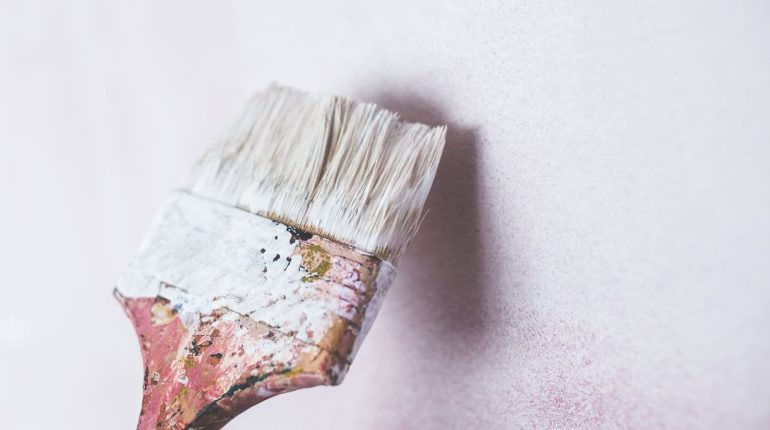
Updated 2025 – New Interior Painting Tips & Best Practices!
This guide has been updated with expert-recommended techniques, modern paint trends, and professional tips to help you achieve flawless interior walls. Whether you’re a DIY enthusiast or hiring professionals, this step-by-step guide ensures smooth, even, and long-lasting results.
What’s the purpose of paint? Why is it such a big deal? Why can’t we just leave our walls bare? Perhaps like Le Corbusier’s “Unité d’habitation” in France.
Well, we hate to break it to you, but, leaving your walls bare may not always suit your needs and be an advantageous choice. Paint is not a decorative device, but a protective layer of your home. It should be treated with care and installed just like how the foundation of a home is installed.
There are various elements that attack the integrity of a house may it be directly, indirectly, quick or gradually through the years. Fortunately, through time, engineers have developed systems that prevent these elements from making immediate damages that may endanger us while inside our homes.
The paint on your home is part of these systems and it is right in front of the battle ― the primary defense against destructive forces and natural elements like water, dust, heat and insects.
By now, you should know that painting your walls should be done with an eye for detail, knowledge of proper techniques, methods and without disregarding its importance.
Where do we begin?
1. Pick the right color
So, which color should you pick?
This is the part where everyone is so excited about. Finally, you have decided to change the colors of your home and now you’re going to pick which color attracts you most. But… to your surprise, you’re met with ten pages of paint chips with rows and rows of different colors and some looking awfully alike.
First, get over the excitement and get serious. There is an easier way to tackle this problem and it is by dissecting the question. Don’t ask yourself “What color should I pick?” Instead, ask yourself these questions:
- What shade do you want? Cool or warm?
- How colorful do you want your house to be? (How far from white or black do you want the color to be?)
- What color matches your furniture?
- What compliments your personality?
After answering each and every of the questions above, you’ll be surprised by how much you’ve narrowed down your choices. At last, you’re looking at a more reasonable number of colors. It’s time to make a decision.
It might be best to ask a friend for help or maybe an expert for professional Melbourne house painting advice.
Best Interior Paint Colours for Different Rooms
Best Paint Colours for Different Rooms
Living Room: Soft greys, warm taupes, or neutral beige create a calm and welcoming space.
Kitchen: Classic white, light grey, or muted blues enhance a bright, clean atmosphere.
Bedrooms: Soft blues, greens, and warm neutrals encourage relaxation and better sleep.
Bathrooms: Pale blues, off-whites, and light greys give a spa-like, refreshing feel.
Home Office: Earthy tones like olive green or deep blue boost focus and productivity.
Pro Tip: Lighter colours make small rooms feel more spacious, while darker hues add coziness and drama!
2. Buy the right type of paint
It’s not only the color that you need to choose. You also need to determine which type of paint you need for your interior walls. First of all, there are oil-based products and water-based products.
Water-based paint are the most common for DIY projects. They’re easy to handle and clean. Also, this type of paint doesn’t choose which surface it sticks to. It’s more like an all-purpose paint. In addition, it’s more resistant to yellowing under the sun which makes it a good option for spaces exposed to sunlight.
On the other hand, oil-based paints are more preferred by most professionals because of the cleaner look they offer. This type of paint takes longer to dry and requires more time to work with. With that said, it’s also easier to make fixes during painting. However, this product is also hard to wash.
Don’t forget to buy enough paint! This is a very important thing to do since you don’t want to run out of paint during the job. A general rule in painting is that 1 gallon will cover 400 square feet of wall.
Choosing the Right Paint Finish
Choosing the Right Paint Finish for Interior Walls
Before applying paint, it’s crucial to choose the right finish for different areas of your home. Here’s a breakdown:
Matte / Flat Finish – Best for ceilings & low-traffic areas (hides imperfections)
Eggshell Finish – Ideal for living rooms & bedrooms (soft sheen, easy to clean)
Satin Finish – Great for high-traffic areas like hallways & kitchens (more durable)
Semi-Gloss Finish – Perfect for bathrooms & trim work (moisture-resistant)
Glossy Finish – Best for doors & cabinets (ultra-durable, high-shine)
Pro Tip: If you have kids or pets, opt for satin or semi-gloss finishes, as they are easier to clean!
3. Use the right tools
Professional painters understand how important using the right tools can make the work easier and faster in a lot of ways. For example, for extra large rooms or spacious walls, don’t be afraid to use 18 inch rollers. It’s best to have them handy during paint work.
You should also have different sized brushes available at your disposal anytime during the job. At times, you’ll be doing some fixes over layers and may need the help of a fine brush. Brushes are also used to paint corners and areas near trimmings and fixed wall decor.
It’s not good practice to buy the cheapest tools when painting. Cheap and x-branded paints are not popular for a reason. They don’t adhere well unlike top brands and they just don’t look that good. Buy quality brushes with bristles that stay intact even with rigorous handling. Bristles of cheap brushes tend to fall off because of flimsy ferrules.
4. Protect your surroundings
Once you’re in the process of painting, most likely, you won’t have time to move furniture around or wipe splashed paint off your expensive couch. This is why moving your furniture and covering any delicate items should be done before anything else.
If moving your furniture out of the work area is too much work, you can gather them up towards the center of the room instead. Covering your furniture with cloth or plastic is also advisable and necessary if you’re painting a small room. Covering your furniture with cloth or plastic is also advisable and necessary if you’re painting a small room. Don’t want to risk having paint splotches on your precious household items and furniture? Maybe consider renting a self storage unit to store your items temporarily while doing your home renovation.
5. Gather all your tools
It’s very important that every step is carried out without interruptions, especially during the application of paint. And, kid you not, but delays and unnecessary cutoffs during painting is mostly caused by empty paint cans and missing tools.
So, before starting any work, gather all your tools. You might even want to bring a checklist with you. You don’t want the hassle of having the look for a missing 3 inch brush in the middle of painting your wall. Besides, you shouldn’t leave unfinished layers to dry or you’ll have a hard time smoothening out any inconsistencies.
Planning on hiring house painting experts who have the necessary tool to do a great job for your painting needs? Newline Painting has experts throughout Melbourne including Mount Waverley, North Melbourne, Northcote, Port Melbourne, and Prahran.
6. Take your time on the prep work
Prep work includes cleaning the wall, filling cracks and holes, fixing dents and eliminating any imperfections that may affect the outcome of the paint job. This process is laborious, but it’s well worth the sweat and callus.
Preparatory work is the most important phase of painting the interior of your house. The correct execution of this stage will determine the strength of the bond between your walls and the paint, smoothness, consistency and overall quality.
No matter what brand or how expensive your paint may be, you won’t be able to hide imperfections on your wall without proper prep work.
This is the reason why most homeowners prefer hiring professionals than doing the paint job themselves. Painting is easy, but there are a lot of steps that need to be carried out beforehand including prep work. Remember, you won’t have a nice painted wall without a nice wall.
7. Remove switchplates and any wall-mounted accessories
Anything in the way should go. You want to have full freedom over your rollers and brushes when painting your wall. You don’t want any obstacles stopping you from getting corners and tight spots. And… you surely don’t want to paint over those obstacles including your switchplates, wall lamps, mirrors and whatnot.
8. Apply layers of paint
There are things that you need to do on the first coat of paint that you don’t need to do on the second, and vice versa.
The first coat of paint is all about speed and just covering the entire wall with a thin coat of paint. It serves as a buffer for the second coat.
Next comes the second coat which is applied with more weight and less speed. The second coat should be evenly applied, overlapped, and smooth. The second coat prevents any bleeding when the paint dries. If you’re painting over a dark colored wall, apply more coats.
Here’s a guide on How Long to Wait Between Paint Coats.
9. Cut in corners with an angled brush
Paint corners with an angled brush. Your rollers may be able to reach the corners of your walls, but they won’t do a better job than brushes.
Most likely, you’ll graze the parallel wall with your roller’s gasket or cage and this may affect the smoothness of the coating.
10. Don’t forget to sand
Sanding isn’t always necessary, but when it is, it should not be forgotten. Sanding is mostly done when painting with high-gloss paints and other types of smooth paints to help the next coat adhere to the underlying coat better. Sanding is also helpful in smoothening out rough spots especially when dealing with wood.
11. Patch up
Once all the layers are done, it’s time to patch up. Look for imperfections and uneven spots. It’s best to use your smallest size brush to patch up for more accuracy and to keep from beefing up surrounding paint. It’s best and easier to patch up when the last coat is still wet and manageable than making adjustments the day after. So, make sure you’re satisfied with the outcome before sleeping it off.
12. Clean your tools right away
It’s best practice to dip brushes and rollers in water when not in use to keep the paint from freezing the bristles up. Oil-based paint will usually be harder to remove and may cause damage to some brushes, causing them to lose their shape. Your brushes and rollers can still be used for your next project, so make them last and save a dime next time.
13. Proper paint storage
Paint usually has 10 years of life, so there’s no reason to throw away your leftover paint from your DIY project. Just make sure to properly seal them. If hammering down the lid helps, then do so. Paint must be stored in temperatures ranging from 50-80 degrees Fahrenheit.
Did You Know?
You can spend a total of $1000 in paintworks and then add a whopping $3000 to the value of your home. Simply painting your kitchen blue and not yellow can keep buyers interested. A taupe living room makes your home more welcoming. A blue door makes it more grand. Simply said, painting your home the right color is one of the cheapest ways to increase its value.
Did you like this comprehensive guide on interior painting? If so, then you’ll also like this article on 10 House Painting Mistakes Everybody Makes and How to Make Your Rooms Look Bigger with Wall Paint.






